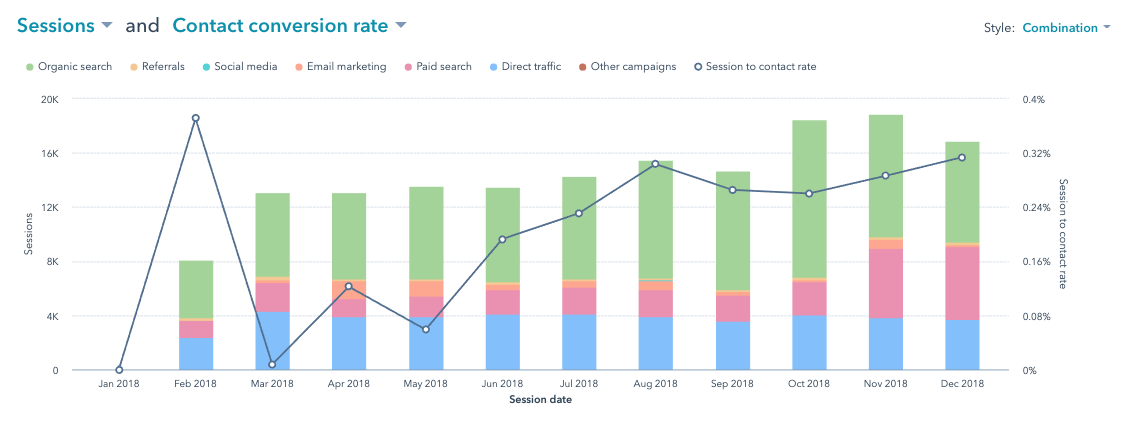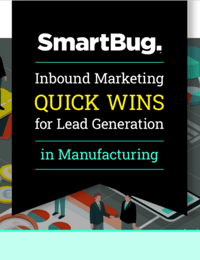
Is your manufacturing company looking to increase the amount of leads in your database? It’s time to look beyond the traditional means of generating leads through trade shows, direct mail, and print ads. Instead, look to create relevant content that your ideal customers are searching for online.Today, around 57 percent of B2B buyers have their mind made up before talking to a sales representative. At the same time, only 41 percent of manufacturers had a documented content strategy in 2019, and 45 percent of manufacturers could not tell you the percentage of leads who convert on their website.
When you shift your traditional marketing focus to a digital marketing focus, you’ll drive leads while saving time and money.
In fact, content marketing costs 62 percent less than traditional marketing while generating three times the amount of leads.
We’ve witnessed it with our own eyes, and we have the lead generation statistics from our manufacturing clients to prove it.
APP Manufacturing
The folks over at APP Manufacturing, formerly known as Advanced Piping Products, were looking to turn their marketing up a notch in order to achieve sales goals. APP’s existing marketing strategy consisted of paid search, quarterly email marketing, and sporadic blogging. They were generating an average of 1,700 sessions per month, converting those sessions into contacts at an average rate of 0.66 percent.
Fast forward one year. As a result of APP’s content marketing strategy, they were able to:
- Increase overall traffic by 67 percent year over year (YoY)
- Increase organic traffic by 244 percent YoY
- Increase their visit-to-lead (VTL) ratio by 65 percent YoY
- Increase leads by 174 percent YoY
How did they do it?
APP launched a comprehensive, content-driven inbound marketing strategy in order to establish their web presence and expand their reach. They started by defining their ideal customer and developing buyer personas. Next, they brainstormed a content strategy that would meet each of those personas in different stages throughout the Buyer’s Journey.
For example, they knew their customers needed extra guidance with requests for quotations (RFQs). As a first step, APP developed a blog titled, “5 Things to Include in Your RFQ.” Because it generated a lot of views in the first few months, they decided to turn that blog into the “RFQ Checklist.” They promoted the checklist through a call to action (CTA) at the bottom of the blog, encouraging users to download it after filling out their name and email address. Of the 498 blog views, 38 people have clicked the CTA, for a strong click rate of 4.52 percent.
As a means of generating quality traffic and new leads, APP continues to launch content on a monthly basis. Their blogs and premium content pieces answer the top questions their buyers are asking.
Read the full case study here.
Bay Supply
Bay Supply capitalized on the opportunity to put an inbound strategy in place, forging ahead of competitors who focused on more traditional marketing tactics. Recognizing the need to adopt a more modern approach, the company’s COO turned to inbound marketing.
As part of their inbound marketing strategy, the company created a plan that encompassed website optimization, content marketing, and conversion rate optimization. The results? Bay Supply experienced drastic growth in a single year as they were able to:
- Increase overall website traffic by 133 percent from January to November
- Increase organic traffic by 174 percent from February to October
- Increase web orders by 75 percent YoY
- Increase sales growth by 30 percent YoY

How did they do it?
Bay Supply was able to gain such impressive results with a few key strategies, all of which enhanced their digital footprint. By starting a blog, they were able to share content that their audience was searching for. The company also developed e-books and other pieces of premium content that users could download when they visited their website. They created landing pages and thank you pages, and optimized the website to improve the experience for the average visitor.
Similar to APP, Bay Supply continues to focus on a content marketing strategy that helps them bring quality traffic into their website, generating leads their sales team can nurture.
Read the full case study here.
If you’re looking to achieve numbers like APP Manufacturing and Bay Supply, start by evaluating where your marketing strategy currently falls on the maturity scale. Understand your ideal customer—their needs, wants, and pain points—and start creating content that answers their questions. Keep in mind, there are a variety of content types your manufacturing company can use to generate leads; blogging, industry reports, FAQs, and pricing calculators are just a few.
These lead generation statistics and results prove that new, quality leads are within reach for your manufacturing company, and it starts with content marketing.

About the author
Aubreigh Blair is a Sr. Director of Revenue Operations and Planning for SmartBug. After being introduced to HubSpot in 2014, she began implementing the inbound methodology for both B2B and B2C clients. Aubreigh has experience in a variety of industries including SaaS, financial services, manufacturing, automotive, healthcare, and senior living. Today, she strategizes and implements operational efficiencies to align internal teams, with the ultimate goal of driving revenue growth. Read more articles by Aubreigh Blair.






















